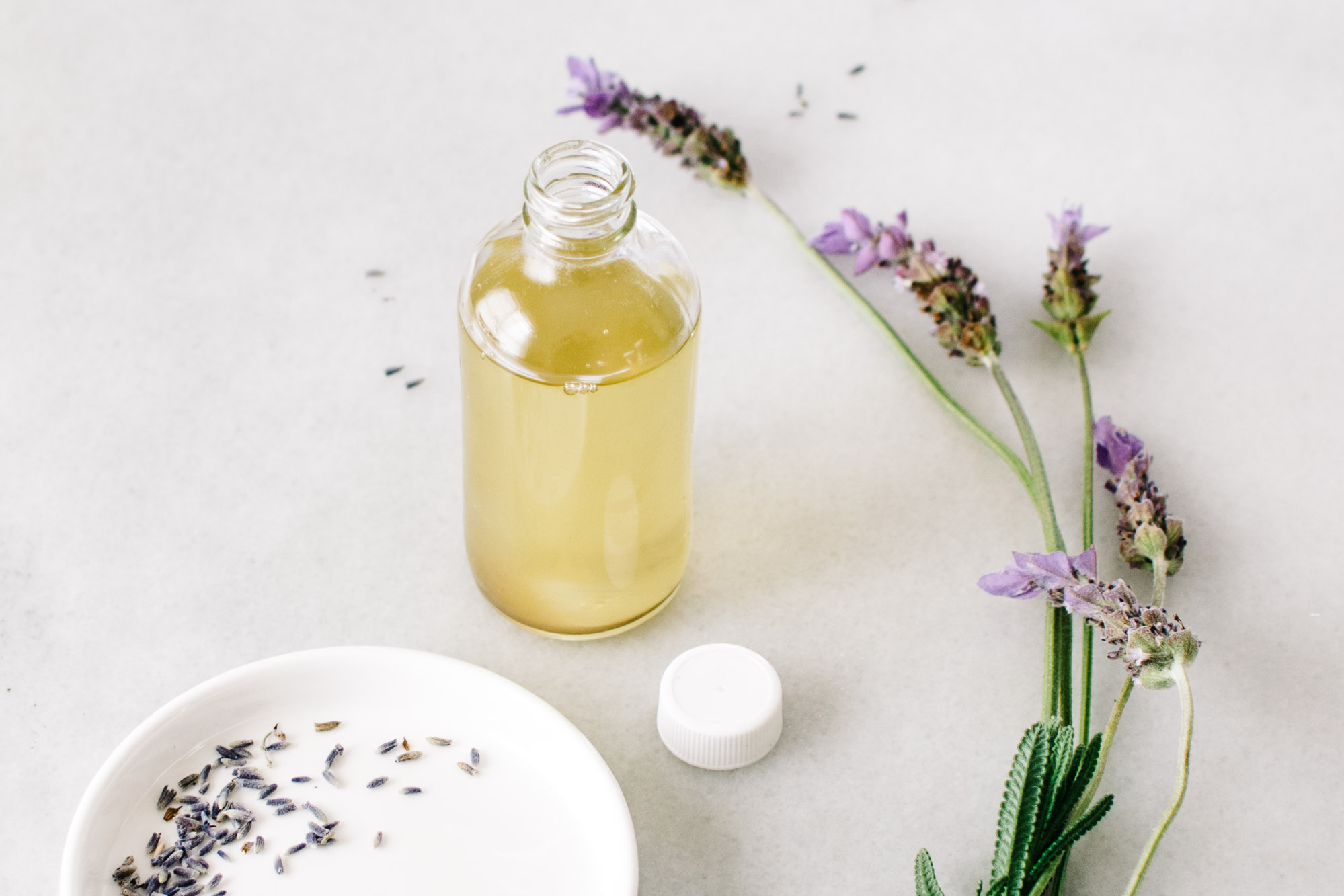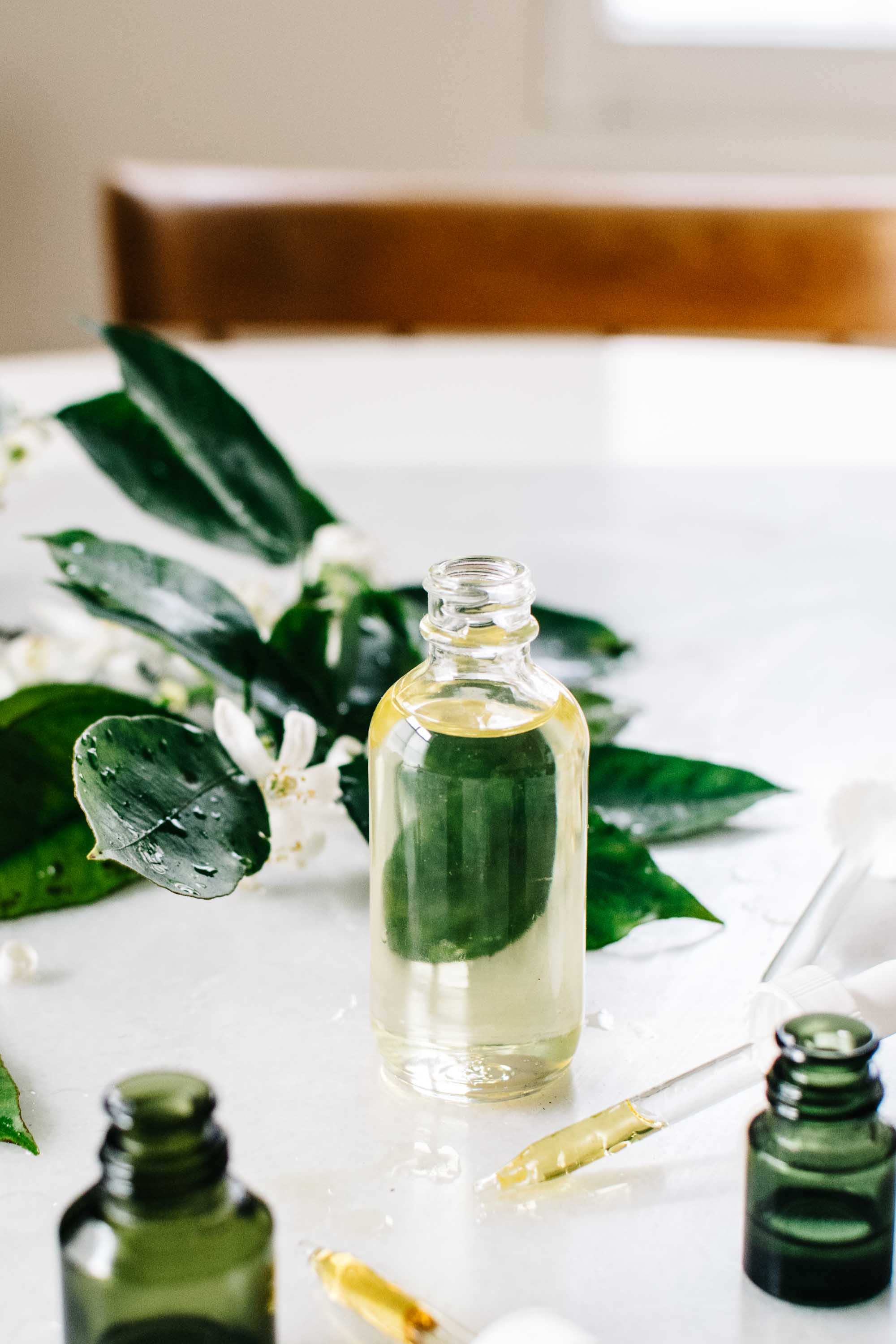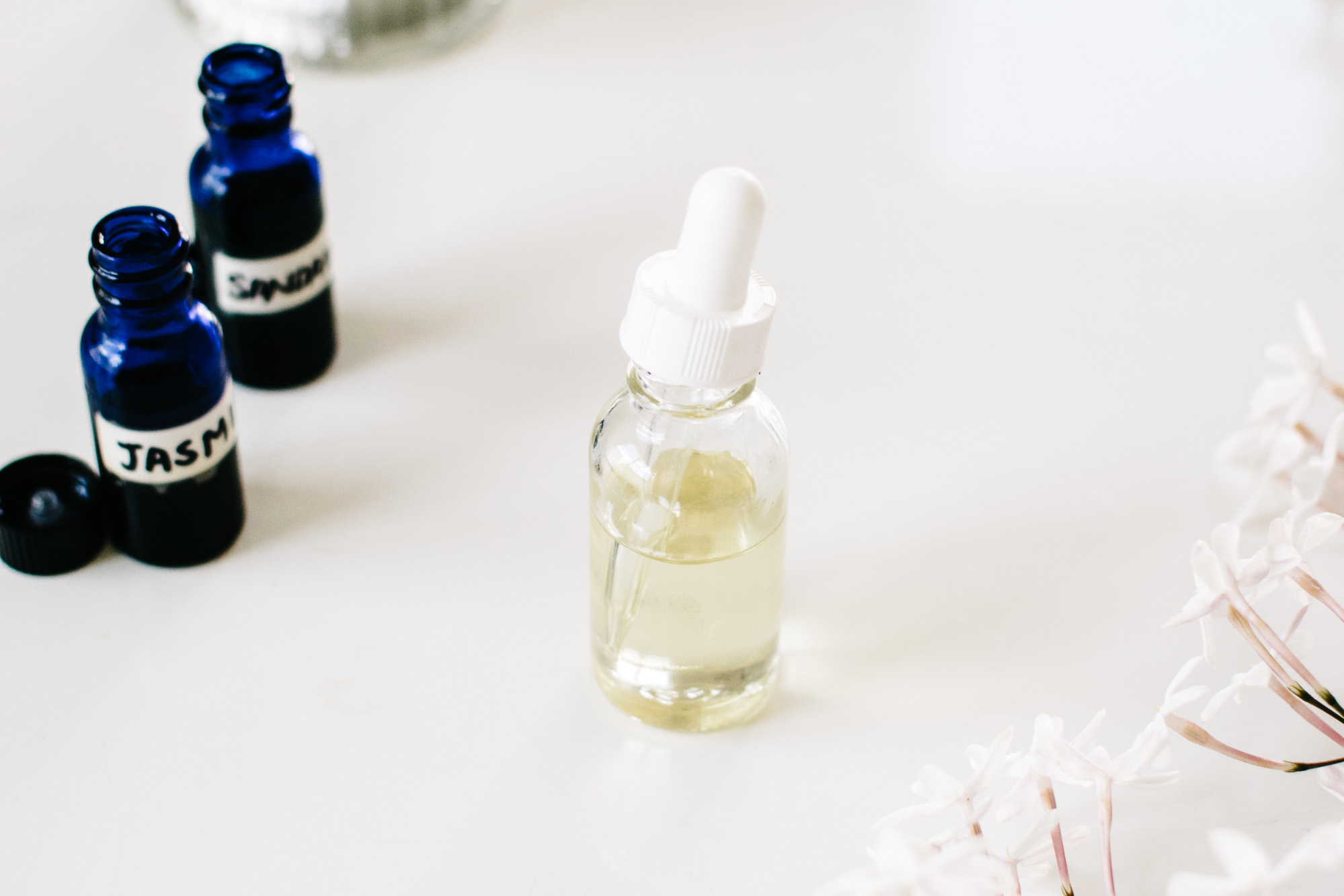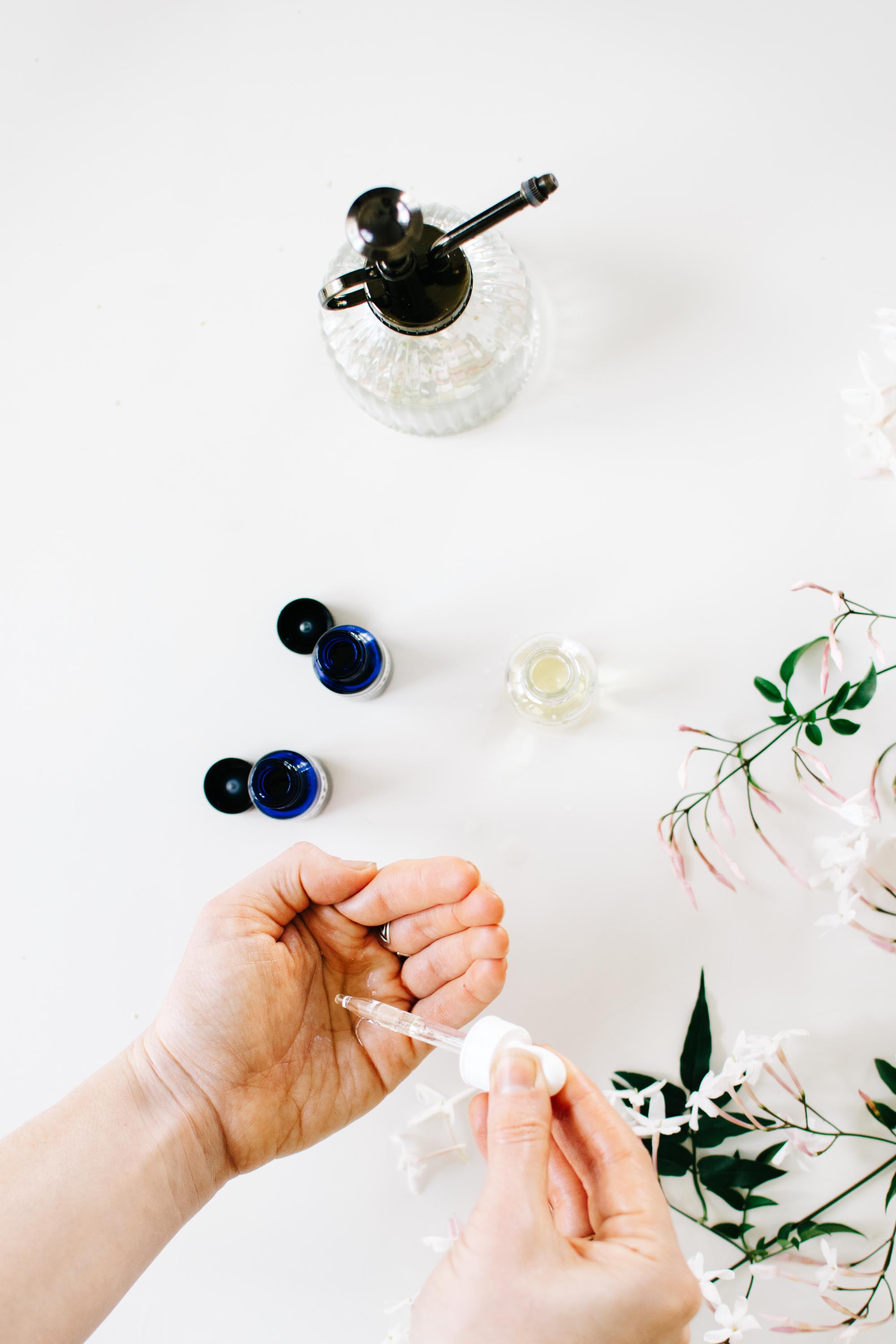
This post contains Amazon affiliate links.
I grew up surrounded by oils. Beakers of sweet almond and safflower, gallons of olive, and tubs of coconut. Pint bottles of lavender essential oil and cups full of sandalwood. Moisture and scent was everywhere. This was my life as the daughter of an aromatherapist. My mother spoke plant as fluently as she spoke English, and she shared with me that same sense of connection to the world of flora. By the time I was a teenager working in my parents’ body care and spa product factory, I had learned how to deliver deep, lasting moisture to my skin. And it wasn’t through the latest fad in lotion or body butter.
Let’s be real: You spend hundreds or thousands of dollars a year on skincare products that only kinda sorta do the job. What’s more, in order to stay shelf stable, those products are loaded with chemicals, preservatives, alcohols, and petroleum products that you’d never put on your skin, if given the choice. What goes onto your skin is readily absorbed into your bloodstream, so it’s time you paid heed to what you’re slathering on your face and body.
The good news: You can ditch pretty much every store-bought, pre-made, artificial (or just overly complicated) ingredient-loaded moisturizer in your cabinet and focus on the good stuff—pure, single-ingredient oils.
Here’s a breakdown of the oils I use, when, and why. As with any change in your health or skincare regimen, please consult a qualified medical practitioner to assess your skin’s specific needs and challenges.

Oil Moisturizing 101: The Team
Oil moisturizing may be counterintuitive for some, particularly if you have skin that produces an excess amount of oil, or sebum. But here’s where things get life-changing: Your skin is only oily because it’s not getting all the moisture it needs, and is over-producing oil to compensate.
The solution? Give your skin the oil it needs, and it will naturally return to a state of balance.
Nota bene: I don’t use all the oils below, just one or two at a time. These are the oils that are in regular rotation in my skincare regimen.
Sweet Almond Oil (body & face).
Great for face and body, in scrubs and moisturizers.
Raw Coconut Oil (body only).
Makes your skin feel like velvet. Also great for your lady parts. Use on the body, not on the face. A standard in Ayurvedic practice. Use what you’ve got in your kitchen.
Apricot Kernel Oil (body & face).
Similar to sweet almond oil but slightly lighter weight, I like to use apricot kernel oil when my facial skin needs a little extra moisturizing, or is feeling a bit sensitive.
Rosehip Seed Oil (body, face & hair).
Lightweight oil that’s high in beta carotene and rich in omega fatty acids. Some anecdotal evidence suggests rosehip seed oil may minimize the appearance of scars and soften scar tissue. Use on face and body, and to de-frizz hair.
Raw Sesame Oil (body & face).
Great for drenching dry or sensitive skin, particularly in colder months. A standard in Ayurvedic practice. Use on body and face.
Jojoba Oil (body & face).
A lightweight oil good for body and face, which is widely accessible in most stores. Also good for makeup removal.
Olive Oil (body & face).
Excellent for drenching dry skin in a pinch. It’s heavy weight, so should be used when deep hydration is needed. Use what you’ve got in your kitchen.

My Routine
Body.
- On clean skin that’s damp or dry, I apply a generous amount of oil. Massage oil into the skin.
- Massage time. As you apply your body oil, give yourself a massage. Always move your strokes inward toward the heart.
- If you intend to apply sunscreen, leave oil off these parts of the body.
- If I’m feeling fancy, I mix my own body oils. All you need is a base or carrier oil (like any of the oils above), and one or a few essential oils. There are several body oil recipes in Kale & Caramel: Recipes for Body, Heart, and Table. You only need a few drops of essential oils per 4-8 ounces of carrier oils.
Favorites include:- jasmine and juniper
- rose and sandalwood
- neroli
Face.
- I remove all makeup with oil applied to a cotton pad. You can use the same exact oil you use to moisturize your face. If your mascara is stubborn, try loosening it up with some warm water first.
- I wash my face with raw, unfiltered honey. That link will teach you the how and why.
- Optional: I use a floral spritz. Like rosewater or orange blossom water. Just because it feels good and smells even better.
- I moisturize with a dime-size amount of sweet almond, raw sesame, apricot kernel, or rosehip seed oil. I mix it up according to how my skin is feeling.
- Massage time. As you apply your facial oil, give the delicate skin of your face a light massage, always using strokes that move up and out.
- If I’m feeling fancy, I mix my own facial oils. All you need is a base or carrier oil (like any of the oils above), and one or a few essential oils. There are several facial oil recipes in Kale & Caramel: Recipes for Body, Heart, and Table. You only need a few drops of essential oils per 4-8 ounces of carrier oils.
For dryer skin: I like some combination of jasmine, rose, rose geranium, and lavender essential oils in a base or carrier oil.
For oilier skin: I like a blend of jasmine and sandalwood in a base or carrier oil.

Skincare troubleshooting.
Let your skin breathe: Stop wearing so much makeup.
I hear so many people who use makeup regularly complain about their skin. Stop. Stop complaining and stop using all that makeup. Your skin needs to breathe. Always remove makeup before bed. My go-to: Bare Minerals loose powder.
Don’t use overly complex products.
Unless you have severe skin problems (in which case you should be seeing a dermatologist), you’re just irritating your skin.
Active breakouts and pimples?
I keep pure tea tree essential oil on hand to apply directly to active breakouts and pimples. Just a few drops usually sucks the life out of them.
Where do I get essential oils?
My favorite essential oils are made by Floracopeia, but you can get essential oils at any health food store, and online. There is a guide to sourcing and using aromatics in Kale & Caramel: Recipes for Body, Heart, and Table.



